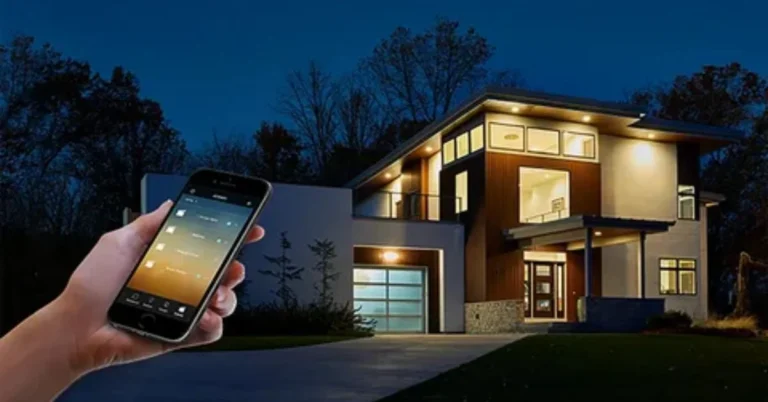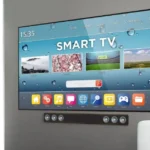Smart lighting systems will be a way through which energy savings will be done starting from homes in 2025. Automating brightness and color adjustments will cut down on energy use while still being convenient. The benefits of smart lighting systems with respect to energy efficiency are obvious; these will ensure long-term returns while reshaping lifestyles into greener alternatives.
Imagine being able to cut down on energy bills while controlling the lighting with even better perspective. By 2025, these are the intentions of smart lighting systems. Aside from the energy efficiency advantages of intelligent lighting, with little changes to lighting, you can lower waste, improve comfort, and support a sustainable living.
Stay with us as we examine in 2025 the advantages of smart lighting systems for energy efficiency. From reducing energy bills to guaranteeing that homes are green, smart lighting transforms energy-efficient houses.
What is Smart Lighting?

Smart lighting is a term that describes lighting systems that can be remotely operated via apps, voice assistants, or sensors. These clever ideas help to reduce your carbon footprint while lowering expenses. Based on your requirements, these systems can be set for timing, color, and brightness using energy-efficient bulbs including LEDs. With accuracy and ease, smart lighting simplifies the control of your home or office illumination.
Smart lighting allows you to create schedules, run lights by motion, and even change lights remotely. This freedom serves to lower energy use and enhance efficacy, hence providing both practicality and cost savings.
Benefits of Smart Lighting
Smart lighting systems are still transforming home and business energy use management as we approach 2025. These systems are part of every energy-efficient configuration because of the various advantages they provide.
- Optimized Energy Use:
Smart lighting systems automatically adjust the brightness based on natural light, occupancy, and time of day. This helps you to save power over time by lowering the demand for too much lighting and guaranteeing that energy is only used when absolutely necessary. - Remote Control and Automation:
Smart lighting lets you manage your lights via voice orders or applications remotely. When not in use, scheduling and automation help to make sure lights are turned off, therefore stopping superfluous energy waste. This level of management helps to cut standby power use, therefore increasing the energy efficiency of your house. - Real-Time Energy Monitoring:
By enabling you to follow consumer patterns and pinpoint places where you may reduce, these systems provide energy usage real-time monitoring. This understanding lets businesses and homeowners make knowledgeable decisions, therefore lowering expenses and using energy more wisely. - Customization for Energy Efficiency:
By means of smart lighting systems, people can produce lighting scenes customized to particular times of day or needs, therefore using energy more effectively. Dimming lights or changing settings during specific times may greatly cut energy use without impeding lifestyle or use. - Eco-Friendly and Cost-Effective:
Smart lighting systems help to lower total energy usage by means of energy-efficient LED lights and more control over usage. This is an environmentally friendly and cost-effective option for 2025 since it not only lowers your carbon footprint but also results in significant energy bill savings.
Reducing energy use via smart lighting systems offer many benefits. Their capacity to automate lighting, track energy usage in real-time, and provide customized functionalities will make these products a critical element in energy efficiency plans for many years to follow.
How Smart Lighting Systems Work

Smart lighting systems consist of the following components:
- Smart Lighting Bulbs:
These are LEDs that are energy-efficient and have wireless connectivity as well as sensors. Mobile apps or voice commands provide simple control over them. - Hub or Bridge:
Central hardware linking the lightbulbs to the internet allows for integration with other smart home gadgets and enables remote control. - Mobile App:
From everywhere, an intuitive app offers consumers freedom and flexibility in managing, observing, and customizing their smart lighting network.
Top Smart Lighting Systems for Energy Efficiency

1. Philips Hue:
Top smart lighting system with many energy-saving bulbs and compatibility with well-known smart home platforms including Amazon Alexa and Google Assistant.
2. LIFX:
Known for its energy-efficient lamps and user-friendly app, LIFX offers simple customization to guarantee perfect lighting for every scenario.
3. Belkin Wemo:
Belkin Wemo offers a simple setup and energy-efficient bulbs, also working seamlessly with major smart home platforms for easy control.
Considerations for Installing Smart Lighting in Offices

Benefits of fitting smart lighting in offices include energy savings and higher efficiency. Nonetheless, several key factors have to be checked over to guarantee a good implementation before the change takes place.
- Compatibility with Existing Systems:
Make sure the smart lighting system works with your office’s present configuration, including those of other smart devices or building automation systems. This will prevent issues with integration and make controlling all devices from a single platform easier. - Energy Efficiency Goals:
Identify specific energy-saving goals before installing smart lighting. Whether you aim to reduce energy consumption during off-hours or create customizable lighting schedules, aligning your system with these goals will help maximize savings. - Scalability:
Consider the future growth of your office and choose a smart lighting system that can scale easily. You’ll want to ensure that additional lights, rooms, or even entire floors can be added to the system without significant upgrades or changes. - Lighting Design and Employee Comfort:
Maintaining a pleasant lighting atmosphere for staff is just as important as using intelligent lighting systems to automatically save energy. Select a system with variable color temperature and brightness that will fit many projects therefore creating a perfect work environment. - Control and Management Options:
Look for systems that allow both centralized and individual control. The flexibility to control lighting remotely via an app, voice commands, or automated schedules is essential, but having physical control in each workspace can offer added convenience for employees. - Security Features:
Consider smart lighting systems that integrate with your office security system. Autonomous lighting schedules and motion sensing features help to keep unauthorized access at bay and enhance security after hours.
A close analysis of these elements will help to guarantee that the introduction of smart lights in your workspace raises efficiency, lowers energy use, and creates a more sustainable work environment.
Smart lighting – is it right for you?

Smart lighting offers a modern and efficient way to manage your home or office’s lighting, but it may not be necessary for everyone. Before deciding if smart lighting is right for you, consider your needs, lifestyle, and budget.
- Convenience and Control:
Smart lighting will greatly improve your laziness if you appreciate it. You can even set programs, operate lights remotely via apps, voice commands, or remote voice. If you’re always out of the house or like to change lights from your seat, this extra flexibility might be a game-changer. - Energy Efficiency:
Smart lighting is perfect for people wanting to lower energy usage. Automating lighting according to occupancy, time of day, or level of natural light availability improves energy efficiency and lowers power costs. Smart lighting would be a great expense if you want to save money or boost energy efficiency. - Customization and Ambiance:
Customizable color options and brightness enable you to set the ideal mood for different occasions with intelligent lighting systems. With control over lighting choices, whether it is strong light for work or a gentle glow for relaxation, one can improve their surroundings and therefore increase comfort or productivity. - Budget and Setup:
Although intelligent lighting systems provide fantastic advantages, they call for an initial outlay in compatible bulbs, systems, and setup. You could favor conventional lighting if you don’t really see a great need for sophisticated capabilities or are on a modest budget. Adding smart lights can be a logical next step, though, if you intend to equip your house or office with other intelligent equipment.
Smart lighting might be a good acquisition if you appreciate personalized lighting, energy savings, and ease. Reevaluate whether it meets your way of living and gives value for your area depending on your budget and wants.
FAQs
What are the benefits of smart lighting?
Smart lighting offers convenience, energy savings, and enhanced control over your lighting environment. With features like remote control, scheduling, and dimming, smart lighting improves both comfort and energy efficiency.
How does smart lighting save energy?
By automatically changing brightness depending on occupancy, natural light, and time of day, smart lighting helps to conserve energy. This makes sure lights are utilized only when needed, therefore lowering waste and decreasing energy costs.
How does lighting affect energy efficiency?
Eco-friendly for energy savings, smart lights use energy-efficient bulbs and automation to lower energy consumption.
What is the best lighting for energy efficiency?
Energy efficiency wise, LED bulbs top all other alternatives. When combined with smart lighting systems, they use less energy and last longer; this would further increase energy efficiency while giving ideal illumination.
Conclusion
All things considered, smart lighting systems clearly have good energy saving properties. Smart lighting aids to lower redundant energy use by automatically changing brightness according to daylight, occupancy, and time of day. Remote lighting control and scheduling keeps lights only on when called for, therefore minimizing waste and reducing energy costs. For anyone wanting to raise the energy efficiency of their house or workplace, these qualities make smart lighting a superb option.
Moreover, smart lighting systems provide real-time tracking that helps consumers to see their energy consumption. This helps you keep tabs on usage trends and spot places for development. Flexible settings and energy-efficient lights of smart lighting systems provide economic and environmental benefits. A wise decision going into 2025 would be using intelligent lighting systems for energy efficiency since they save cash and help to create a more sustainable future.



